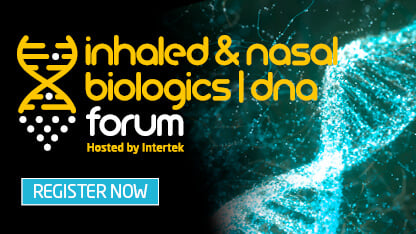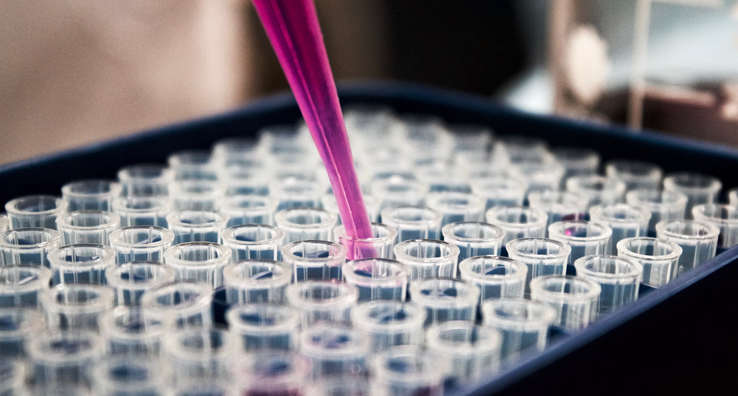Protein higher order structure (secondary, tertiary and quaternary protein structure) determination in accordance with FDA, EMEA and ICH Guidance (Q6B, Q5E)
Protein higher order structure (HOS) analysis is a key component in defining a biologic’s critical quality attributes (CQAs) and understanding the molecular structure of a protein and forms a central requirement of the ICH Q6B guideline: Test Procedures and Acceptance Criteria for Biological Products.
Changes in higher order structure can impact the quality, stability, safety and efficacy of biopharmaceutical products with increased potential for immunogenicity and loss of biological function. As such, analytics are required to measure and monitor secondary, tertiary and quaternary protein structure during early and late phase characterization, and also as part of comparability studies (ICH Q5(E)).
Determination of Higher Order Protein Structure
A number of analytical approaches can be applied, which must be able to determine if a change in protein higher order structure is apparent. If specific changes in quality attributes are expected as a result of a process change (e.g., modification of a chromatographic purification step), new analytical methods, above and beyond those used previously, might be required in order to capture all pertinent information about higher order structure.
Our biologics characterisation laboratory provides higher-order structure analysis via a suite of orthogonal techniques and services. We examine the secondary and tertiary structures of protein in “normal“ presentation as well as a function of temperature and pH, allowing the study of subtle structure changes that may occur during processing, storage or handling.
Protein Secondary Structure Analysis and Tertiary Structure Characterization Methods
- Far and near-UV circular dichroism (CD) studies enable CD analysis of protein secondary structure to generate quantitative information on secondary and protein tertiary structure (α-helix, β-sheet, β-turns and random coil/unfolded)
- Fourier transform infrared spectroscopy (FTIR) studies with deconvolution of the amide-1 band to provide estimates of secondary structure
- High field 600 MHz NMR studies - 1D and 2D NOESY (through space correlation) and TOCSY (through bond) correlation experiments allows 3D structure determination
- Intrinsic fluorescence studies for qualitative tertiary structural information
- Ultraviolet-visible (UV-vis) spectroscopy (second derivative) for qualitative local tertiary structure
- Dynamic Light Scattering (DLS)
- Size-Exclusion Chromatography (SEC) with Multi-Angle Laser Light scattering (MALS). SEC-MALS provides valuable insight into protein aggregation formation and aggregate levels in solution
- Sedimentation Velocity Analytical Ultracentrifugation (SV-AUC) provides information about the level of homogeneity or heterogeneity of a protein solution and can detect low level of aggregates present
Higher order structure studies can include the above techniques with additional insight from Differential Scanning Calorimetry (DSC), which can measure protein melting transition temperature (Tm) and thermal profiles, monitoring subtle changes in protein higher order structure and stability of the biologic.
The HOS data we generate can assist you during formulation development, stability studies, comparability and process development. In addition, techniques to study protein aggregation are important. We deploy dynamic light scattering (DLS), size-exclusion chromatography (SEC) and analytical ultracentrifugation (SV-AUC) to meet the regulator’s expectations of orthogonal methods.
The relationship between higher-order structure and biological activity is of increasing importance. Potency testing is the quantitative measure of biological activity, and we offer cell-based bioassays by measuring the product’s physiological response.
Higher Order Structure Analysis for Biosimilars
There is a regulatory expectation that, as part of the demonstration of biosimilarity during development, a comparative side-by-side HOS analysis is conducted between the biosimilar and innovator. Our programs incorporate several methods (such as CD, NMR, and FTIR) with expert data interpretation to facilitate the assessment of comparative analytical characterization data across multiple lots of both biosimilar and innovator (reference) products in order to evaluate the variability of quality attributes.
Comprehensive Protein Characterisation from One Source
With an in-depth knowledge of the current regulatory expectations for higher order structure analysis and expertise across multiple techniques, our scientists design and deliver strategic phase appropriate analytics required to support characterisation, CMC protein analysis support, comparability, stability testing, regulatory submissions and ongoing batch release analysis. Bringing quality and safety to life, Intertek offers Total Quality Assurance expertise through our laboratory services to help you meet and exceed quality, safety and regulatory standards.
4th Annual Inhaled & Nasal Biologics | DNA Forum
25-25 September 2025
Cambridge, UK
Join us for a ground-breaking and insightful forum on inhaled and nasal biologics development: Two days of cutting-edge talks and networking opportunities with leaders in this complex area of inhaled medication and inhaled vaccine development.
LEARN MORE & REGISTER

Pharmaceutical News & Events
- PRESS RELEASE: Lab expansion to enhance capabilities in inhaled biologics drug development
- PRESS RELEASE: Intertek partners with CrystecPharma to advance formulation science and accelerate development for dry powder inhalers
- NEW! Blog: Optimising Quality in Pharma Supply Chains
- Determination of Particles in Pharmaceuticals - Article
- Discover our Audit Live Tool for direct access to our scheduled audits
- Extractables/Leachables Lab Tour - Request access
- Medical Device Extractables & Leachables Studies
- Glycosylation Analytical Approaches for Antibody Therapeutics
- Rapid Determination of Low/Trace Level Benzene in Pharmaceutical Excipients and Finished Products

COVID-19 VACCINE OR THERAPEUTIC TESTING & DEVELOPMENT SUPPORT
IMMEDIATE QUESTION? Ask our experts now
FACTSHEET: COVID-19 Vaccine or Therapeutic Testing & Development Outsourcing
ARTICLE: Repurposing Vaccines for Intranasal Development
WEBINAR: Quality Control Strategy for Vaccine Development
WEBINAR: Repurposing Drugs for Inhaled Delivery
eBOOK: Contingency Outsourcing Solutions

